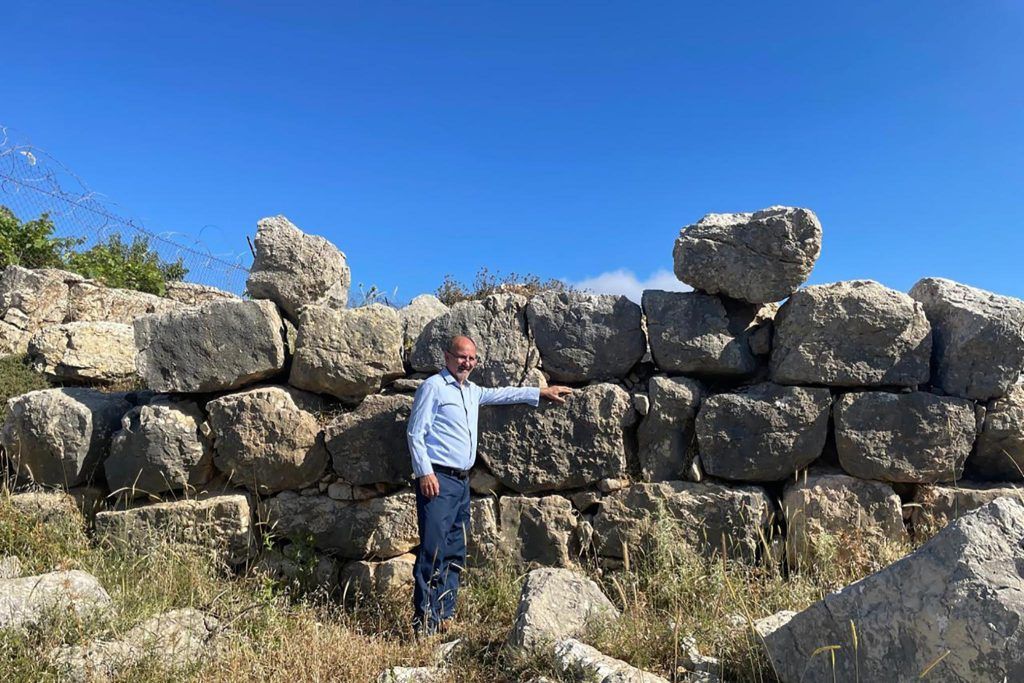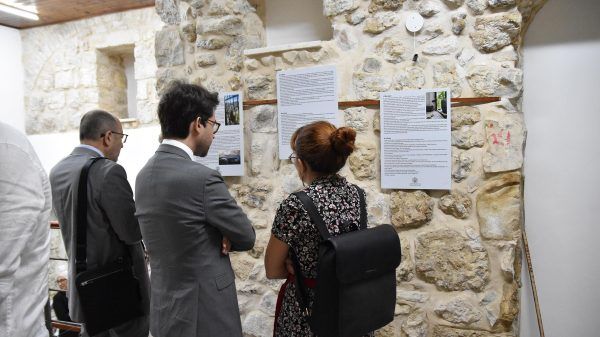Professor of Archaeology at the Higher Institute of Archaeology at Al-Quds University, Prof. Salah al-Hudaliya, published a joint paper titled “Heritage and Conflict in Gaza” in the “The Palgrave Encyclopedia of Cultural Heritage and Conflict” in Springer international publishing company with his colleagues Dr. Luay Abu al-Saud from Al-Najah National University and Mr. Ayman Warasneh from Al-Istiqlal University.
The researchers issued a call to the international community and all international institutions concerned with cultural heritage, urging these entities to assume their responsibility to protect Palestinian cultural heritage, which is an integral part of human heritage.
The lead researcher, Prof. Dr. Salah Al-Hudaliya, explained that there are 354 archaeological sites and historical landmarks in the Gaza Strip, stating that more than 60% of them were partially or completely destroyed during the ongoing aggression, such as Tal Al-Sakan, Tal al-Ajoul, Tal Umm Amer, Al-Anthedon Port, the historic Jabalia cemetery, the Byzantine church in Jabalia, Church of Saint Porphyrius, the Great Omari Mosque in Gaza City, Katib Wilayah Mosque, the Kamaliya School, Qasr Al-Basha Museum, Dar Al-Saqqa (Al-Saqqa House), the Ottoman archives, and Barquq Castle (Qalaat Barquq), among others. The ongoing genocide has also resulted in the death of numerous professionals in the field of archaeology and cultural heritage, thereby posing a significant challenge to the future of archaeology in the Gaza Strip.
Professor Al-Hudliya explained that the Gaza Strip has a unique status within the context of the homeland as it has undergone significant changes over time. Prior to 1931, the area was approximately 1,200 square kilometers. However, by 1945, this area had decreased to 1,111 square kilometers due to “administrative reform” during the British Mandate. Further reductions occurred in 1948, known as the Nakba, when the area shrank to approximately 555 square kilometers. By 1950, the area had further diminished to 365 square kilometers as a result of the “Al-Auja Agreement/Coexistence,” which was signed on February 26, 1950, between Egypt and Israel. Therefore, the area of the Gaza Strip prior to the present Israeli aggression constituted 1.33% of the area of Mandatory Palestine during the British Mandate period.
He pointed out that the geographical location of the Gaza Strip has played a role in attracting people from different cultures and civilizations to settle there continuously from the late Stone Age to the present. The region has witnessed the establishment of cities, harbors, villages, commercial khans, castles, and architectural edifices, a number of which possess exceptional universal values that have qualified them for registration on the World Heritage List. Gaza has always shown great zeal.
Dr. Al-Hudaliya cited an incident from over 2,300 years ago, when all the Levantine cities surrendered to Alexander of Macedon, except for Gaza, which remained resistant. Alexander was unable to control Gaza until he had the opportunity to punish its ruler and inhabitants.
Dr. Al-Hudaliya clarified that the incentive for his research emerged subsequent to receiving correspondence from the first editor of the encyclopedia during the early stages of the war on the Gaza Strip. In this correspondence, the editor expressed a desire to shed light on the cultural heritage of the Gaza Strip and the horrors of destruction and obliteration wrought by the war. Recognizing the imperative to promote the Palestinian heritage and its existence, Dr. Al-Hudaliya embarked on a collaborative endeavor with his colleagues from various academic institutions to foster research collaborations both domestically and internationally.
The Palgrave Encyclopedia of Cultural Heritage and Conflict is a distinguished academic encyclopedia that documents and analyzes the intricate relationship between cultural heritage and conflict. It explores the impact of conflicts (whether military, political, social, or cultural) on cultural heritage, and how wars and crises affect heritage sites, historical monuments, and cultural patterns.









